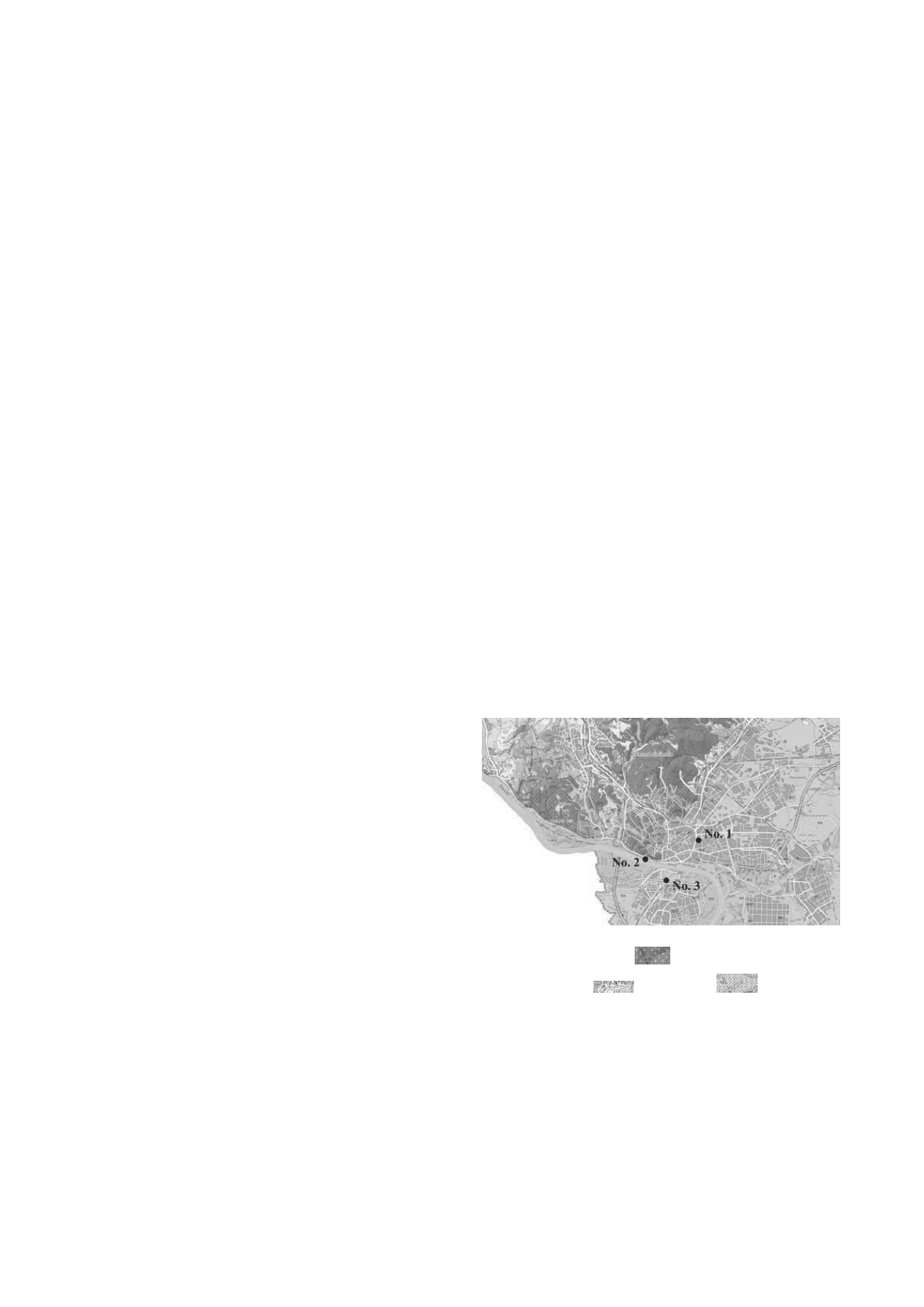
2107
Stability and dewatering problems of deep excavations in Bratislava
Les problèmes de stabilité et d'assèchement des excavations profondes dans la ville de Bratislava
Turček P., Frankovská J., Súľovská M.
Faculty of Civil Engineering, Slovak University of Technology in Bratislava, Slovakia
ABSTRACT: Geotechnical design and execution of deep excavations of high-rise buildings in urban areas are presented in the paper.
Design of retaining structure and subsoil behaviour based on the results of in situ measurement during execution with the aim to
minimise the settlement of high-rise building are discussed. Limited space on the surface and ground conditions in Bratislava are
important factors for design of foundations. Quaternary sediments, coarse grained soils, mainly sands and gravels reach down to the
depths of 12 to 20 m, Neogene sediments, mainly clays and silty sands with confined ground water level occur deeper. Ground water
level occurs from 2 to 6 m below the surface level. Several examples of excavations where the risks of local hydraulic failure were
present are analysed. The paper summarizes stability and dewatering problems associated with design and execution of deep
excavations in the city of Bratislava.
RÉSUMÉ : La conception géotechnique et l'exécution des fouilles profondes de bâtiments de grande hauteur dans les zones urbaines
sont présentées dans le document. La conception de structure de soutènement et le comportement du sous-sol sur la base des résultats
des mesures in situ lors de l'exécution dans le but de minimiser le tassement des bâtiments de grande hauteur sont discutés. L’espace
limité sur la surface et les conditions du sol à Bratislava sont des facteurs importants pour la conception des fondations. Les sols à
gros grains du Quaternaire, principalement les sables et graves descendent jusqu'aux profondeurs de 12 à 20 m, les argiles du Néogène
et les sables silteux avec une nappe en charge se trouvent plus profonds. Le niveau de la nappe se trouve de 2 à 6 m en dessous du
niveau de la surface. Plusieurs exemples de fouilles sont présentés où les risques d'une défaillance hydraulique locale ont été analysés.
Le document résume les problèmes de stabilité et d'assèchement associés à la conception et à l'exécution des excavations profondes
dans la ville de Bratislava.
KEYWORDS: retaining structure, deep excavations, geotechnical design, subsoil behavior
1
INTRODUCTION
Geological conditions in Bratislava are determined mostly by
Quaternary sediments of the Danube river, Neogene
sedimentsand Cenozoic crystaline rocks (biotite granites to
granodiorites, diorite and gneises) of Carpathians. The most
important construction activities in last 20 years have been
concentrated in the Danube area, with the Quaternary sediments
(coarse grained soils, mainly sands and gravels)with thickness
of 12 to 15 m, in the city of and in near vicinity of Bratislava.
South and southeastward the depth is increasing, up to 400 m
under Gabcikovo (27 km from Bratislava). The Quartenary
sediments are underlayed by fine-grained Neogene marine
sediments with typical altering of fine grained and coarse
grained sediments. Fine grained sediments are classified as
clays from firm to very stiff consistency. Coarse grained
sediments are classified as dense sands, silty fine sands and
clayey sands. Under the Neogene deposits there are the same
crystaline rocks as on the northern side of Bratislava (Kopecký,
Černý. 2008). Underground water has two main horizonts. One
is underground water in Quaternary deposits with free water
table donated by water from precipitation and from Danube
river. The second horinozont is groundwater confined in the
Neogene deposits. The water is pressurized and recharged by
underground water flowing from nearby Male Karpaty Mts.
Limited space on the surface and ground conditions in
Bratislava are the important factors for design of foundations.
Three examples of deep excavation where the risk of local
hydraulic failure was present are analysed.
Legend:
Cenozoic crystaline rocks:
biotite granites, granodiorites,
diorites,
Quaternary deposits:
slope deposits,
river deposits
Figure 1. Geological map of Bratislava region and location of case
studies.
2
EXCAVATION FOR BUSINESS CENTER ON
KARADZICOVA STREET
The first case study is excavation situated on the left side of
Danube River in the city centre on Karadzicova street.
Foundation pit was constructed for the high-rise building with
30 floors and 3 underground floors. The longer side of the
foundation pit with the dimensions of 200x39 m and depth of
11.4 m was adjacent to existing buildings, two sides were


